What is Web3 and why does it matter? Web3 is about to change the world, from the Blockchain to Crypto to DeFi to the way we use the internet.
The world is on the brink of a new technological revolution in the world of cyberspace. Many are calling this Web3 or Web 3.0, the successor to Web 2.0 and the original Web 1.0. But what is Web 3, and how will it affect you?
Since the internet was transformed in the last 2 decades by a variety of innovations ranging from ubiquitous mobile devices to digital payment systems, internet has become a part of daily life for most people in the civilized world. The transformation of society has become so great that Elon Musk has said famously that we are already cyborgs, in a way, because our minds have merged with technology and the internet.
With Web 2.0 and the proliferation of the internet have come many challenges that have offset the utility of the internet to mankind. Among these challenges include problems with controlling the flow of information, or the very inhibition of the flow of information, and security and privacy of users and their data. Moreover, the ability to profit from the internet has provided both advantages and disadvantages that have not been fully resolved with Web 2.0. Add to this scalability, efficiency, and other concerns, and a new wave of changes was necessary to solve the needs of high-tech society.
Web2 companies like Google, Facebook, Twitter, Amazon, and the like, have become the mega powerhouses of the world, making up some of the wealthiest people on the planet and some of the largest organizations on the planet. However, with this mass power came great responsibility that many believe has not been handled well, including governments who would not trust Facebook with their own cryptocurrency. As a result, there rose a need to overcome these challenges, and this could only be done with a radical transformation of the internet as we know it.
Revolutionary Transformation of the Web
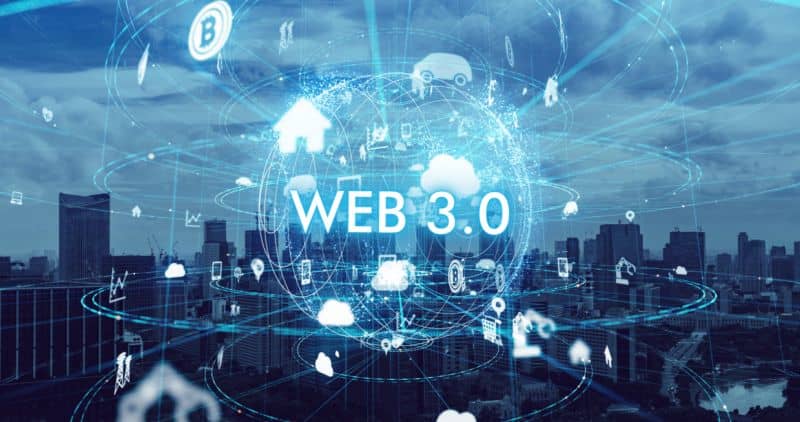
It could be called the next technological revolution, changing the internet and the way we use it much like the technological revolutions of times past changed the way people’s lives with the inventions of machines, and computers. This is not quite the same though because it focuses primarily on the way we use the internet, but it still affects our daily lives.
Major innovations that will define Web3 will be the blockchain and crypto applications (such as Ethereum and smart contracts), changes in the control of information through decentralization and a distributed system, and a new system of digital payments that decentralizes the web’s financial systems. Current mega ecosystems of massive datacenters, control of bandwidth and traffic, expensive server farms, and challenges with receiving payments, all will be virtually eliminated when Web3 reaches maturity.
Both users and companies will be transformed by the new Web3. This is not some gimmick, no more than Web2 was a gimmick – Web2 changes the way the world does business, and responsive design, mobile payment systems, app markets, and other Web2 innovations fundamentally transformed the world. Companies were forced to evolve or die. Many giants like Blackberry disappeared by delaying too long for the changes by Web2, in the way that Xerox disappeared when they failed to adapt to Web1.
Web3 is another technological revolution that will force companies to adapt or be left behind. Companies will need to remain flexible, dynamic, and continue to innovate and learn and grow into new markets that don’t even exist yet. The way that business is done now at the end of the Web2 era is going to change radically, and anyone who fails to change will be left in the dust.
Web3 is already here
This is not speculation, Web3 is already in motion and it’s only a matter of time before it takes over. While we don’t know exactly what Web3 will look like, we do have a very good grasp of it as new technologies continue to be revealed. We know Web3 is coming soon because the challenges with Web2 have reached a critical threshold, and Web3 provides solutions that we need. Already, megalithic technology corporations like Twitter, Facebook (now Meta), and Big Tech are losing power to new companies which are being built around Web3.
Many think it’s ridiculous and absurd that Facebook renamed itself Meta and is pushing for a virtual world. While it’s highly unlikely that the virtual world that Meta envisions will ever come into fruition, Meta is not wrong that there will be elements of virtual reality that will be critical to the evolution of company infrastructure in the new Web3 world. It will be a real and essential part of the Web3 ecosystems.

Things like supply, logistics, and other elements of business will be radically transformed in coming years; so while it may sound ridiculous that Meta has changed its name, the truth is that there is some visionary behind it. They are preparing for the Web3 wave in ways that other companies are failing to do, which gives them an advantage, even though many are resistant to it. Even if they don’t get it right, Meta sees the writing on the walls and wants to come out on top, and they are doing everything they can to do just that.
It’s true that people in general are resistant to change; but the new generations from Millennials to GenZ have been raised in a world that is continually changing radically, which has prepared many people in the younger generations (under age 40) to cope with the radical changes needed to keep up with the changing world before it leaves them behind. And with recent world events cutting down the numbers of older people in the world, the younger generations now have the reigns to the future, and into the future we are going.
So, what just are these changes? To understand that, we need to understand where we have come from with Web2 and Web1, the challenges we face with these evolutions of the internet, and why Web3 is necessary to solve these changes. To understand that, let’s look at Web2 and Web1.
What was Web 1.0?

Web 1.0 was the origin of the internet as we know it, before the dotcom boom of the 2000s. Starting with the end of the Cold War in 1991 and ending around 2004 when the iPhone was invented, Web 1.0 revolved around consumers of basic content, and developers who created basic text and image websites.
Today, these old websites would look ancient, and much Web 1.0 content would be practically unusable on today’s mobile devices, because it was not adapted to it. It was fixed, unmovable, and nonresponsive.
Static Content
Web1 content was very basic, and not dynamic. Call to action buttons were not a thing, and consumers had different, much longer attention spans. Flashy and moving content was avoided, and most content was static. Websites generally didn’t use databases, their content was contained in single files, called pages.
For comparison, what we call webpages now typically have dynamic content pulled from databases that are changing and adapting to different environments and use cases. Rarely is there ever a single file containing all the content of a page anymore like Web 1.0.
What was Web 2.0?

Beginning around 2004 with the innovation of the smartphone, and subsequently the proliferation of tablets and other mobile devices, and changes in the way that we generate and consume content, changes in attention span, changes in computer speeds, changes in payment processing, changes in the way we do business, virtual shopping, and other revolutions in daily life, the web evolved into a completely new world and changed everything.
With all these changes came many problems. People started shopping online, so companies needed to find new ways to reach them through ecommerce. People’s attention spans shortened, so websites needed to become more dynamic and easy to use. User experience took a center stage, and software was developed to make it as easy as possible for users to purchase online. Along with this, technological progress advanced at a rapid pace, and everything from supply and logistics to shipping and data storage were revolutionized.
Dynamic Content
The need to serve dynamic content to serve increasing amounts of users, develop faster websites, take advantage of new computing technologies, and also to create new social aspects, forced significant changes in the way that websites were developed. This soon migrated to applications for websites, evolution in web programming languages to serve content, and mobile applications optimized for small screens, that we now call apps.
With the innovation of apps and supercomputers in everyone’s pockets, a new infrastructure of social apps, gaming, and productivity transformed the way people lived their daily lives. Landlines disappeared. And more recently, even cell numbers are less needed than ever. That is more for Web3 later. Instead of visiting people’s houses or needed to travel to go to conferences and meet suppliers and associates, video chat changes the way we socialize, largely eliminating the need for unnecessary travel to socialize and do business.
The Social Web

Web 2 is known as the social web. It is all about making life easier on the web, faster, more dynamic, more convenient on the web and in real life, easier to connect, and be available 24/7 for communication with anyone, anywhere, anytime. It’s about interacting, monetization of content for users.
Web 2.0 transformed what it means to work. Freelancers are now able to work from home in their pajamas. High-level executives don’t even need to leave their homes. And with government lockdowns worldwide, this significantly accelerated the adoption of virtual work. Advances in payment systems allowed it to be possible to monetize content, to get paid virtually, and to sell things online easier than ever.
But with all these changes, and especially the rapid acceleration since the global lockdowns of 2020 and 2021, the infrastructure expanded massively, and in some ways too much, too fast, forcing the need to innovate new technologies to combat the problems that continued to surface with web 2.0.
Privacy Concerns
Privacy started to become a serious concern, and every year surveyed, more and more people are concerned with privacy and security. More people are being hacked than ever, and people’s personal information is being compromised in ways never before seen. With Web 2.0 came security issues that it simply cannot rectify. These flaws in systems are exploited by governments, corporations, and malicious parties, compromising the integrity of the internet and the people who use it.
Additionally, mass adoption on an epic and unimaginable scale, along with massive file sizes increasing strain on bandwidth and infrastructures, and dramatic increases in performance requirements and data storage needs, exponentially increased the costs involved. As a result, scalability is a massive issue with Web2 websites, apps, and software. These major challenges called for a new revolution.
Scalability issues
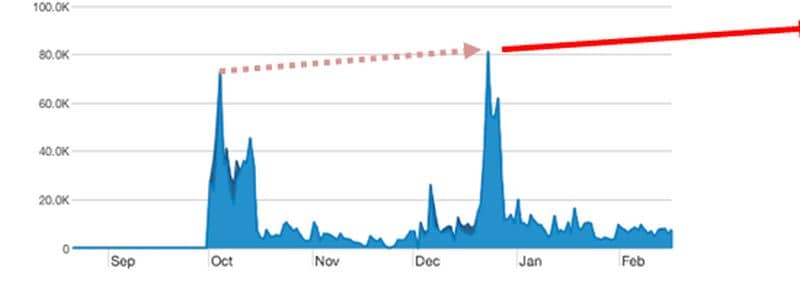
Further, mass adoption of virtual technologies and apps, and dramatic increases in virtual consumers causes significant problems with payment processing that have ruined just about every bank and economic infrastructure, causing extreme delays, shortages, and overloaded servers.
On top of this, DDOS attacks, malicious parties, and a rise in hacking by both governments and individuals through the extensive availability of information, all have resulted in a need for a complete and total overhaul of the entire financial system. Simply put, the financial system as we know it is no longer capable of sustaining the future of the internet. As a result, people began innovating, and the solutions are already here.
Enter Web3
Web3 is referred to as the “semantic web”, and is the solution to all the problems outlined above. The current method of centralized servers, megalithic datacenters, corporate control of private data, antiquated central banks, and even the procedure to developing website and apps, all are outdated and are all about to change. Web3 provides the solutions to these major problems. Web2 has already outlived its lifespan, and Web3 is already stepping in.
You might think there may be a transition to Web3, but you would be wrong. The transition to Web3 has already begun. The early adopters have been experimenting with their technologies for years, and many of the technologies are already ready for market and already being implemented. The global shift over to the technologies is almost here, it is not long now. When it happens, everything you know will change, so be ready.
The Blockchain

Among the massive and major overhauls to the entire internet come the blockchain and cryptocurrency, decentralization and distributed systems, and native & decentralized payment systems that are instantaneous and can handle virtually unlimited transactions instantaneously.
The blockchain is a list of records online that are called blocks, and each of these blocks contains a cryptographic hash of the block before it, transaction data, and a timestamp. It creates a cascading chain of blocks, thus, the blockchain. Because of the system of delivering and storing content, it is immutable, which means it can never be changed; and this makes it extremely secure. It is also completely transparent, which makes it highly trustable.
While blockchain is a difficult concept for many Web1 and Web2 users to grasp, it is worth reading up on, because it is the future of the entire internet. It isn’t just a passing trend or niche, it is going to revolutionize the entire world, and will become fundamental for websites, apps, and finance. You’ll benefit from knowing about what it is and how it works. Other key terms include fungibility and interoperability. For further reading about the blockchain and definitions of key terms, check out: Blockchain & Cryptocurrency Key Terms
Artificial Intelligence (AI)

On top of all this, enter AI. Artificial Intelligence and cybernetic technologies have the ability to radically transform the internet as we know it, advancing technology far beyond the speed that humanity could ever manually do it. It fills the gap to intelligence, and is a necessary factor in the radical changes needed to radically transform the internet and our lives as we know it. But it is not to be feared. AI will never become sentient and take over the world. Only humans controlling it could do that.
Computer Technologies
Advances in 3D data storage and solid state storage have the ability to exponentially increase memory capacities beyond what has been imagined. And neural networks – neural CPUs – are already here. It’s only a matter of time before they replace the current inefficient chips.
Changes in the way that computers even work is also around the corner. Analog computers are the next big thing, right around the corner. Analog computers are faster, better, and more efficient than our current digital computers, and more scalable than ever though possible.
Material Technologies
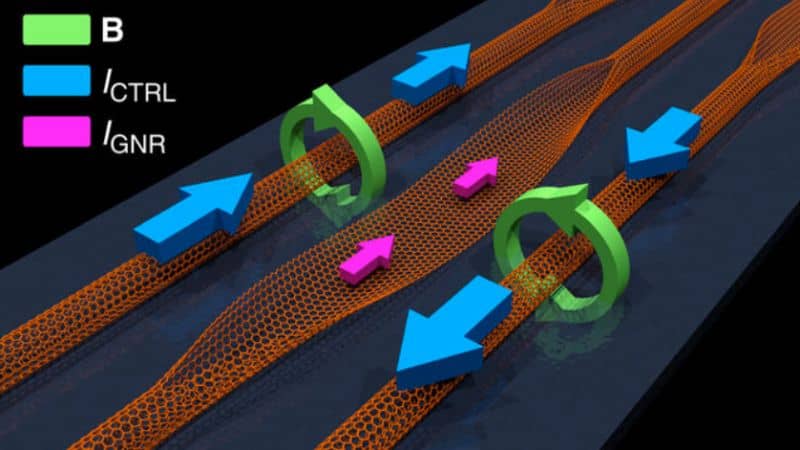
Add to this advances in material technologies such as graphene, organic electronics, flexible screens, quantum computing, flexible batteries, smart glass, and more, all will play their role in transforming our devices to have more capabilities than we ever thought possible.
Simply put, Web3 is a radical technological transformation caused by the divergence into a new ecosystem combined with the convergence of material technologies, advanced computing, AI, and blockchain into a new world wide web that is completely different than what we have today. Everything is going to change.
How will Web3 solve today’s problems?
Web3 focuses on solving the following problems:
Decentralization
Web2 suffered from problems with delivering and storing content due to being on a centralized server. Web3 solves this by removing the centralized element by serving portions of content from multiple sources, often user-driven. Torrent technology was the predecessor to distributed, decentralized content.
Security
Big Tech has been repeatedly hacked, compromising the information of millions of users, and this problem is only increasing day by day. Web3 solves this by securing data on immutable blockchains and cryptographic networks, making it virtually impossible to hack.
Trust
How Web3 solves issues with trust is twofold. First, lack of trust in corporations and companies handling your data, and second, lack of trust that the data you are reading is accurate. That is to say, that it has not been intercepted and changed. The first is a human problem, and the second is a computer problem.
Lack of trust is the reason many fear the internet in Web2. Between concerns about data and privacy, and concerns about hackers, bad actors, and malicious parties manipulating, intercepting, or changing data, trust is a major concern in Web2, where we have more data on the web than ever before.
Since the problems with security can be solved with Web3 and the blockchain, trust can be restored both from the human element and the computer element, and user adoption can increase, and do so more safely.
Speed
Speed of websites, content, systems, apps, and financial transactions are one of the largest and most complicated concerns with Web2. Because everything is served from individual servers in a centralized location, there is a limit to the amount of data that can be sent and retried. Think of it like trying to shove the water from the Hoover Dam into a garden hose. It isn’t going to work.
But Web3’s decentralization changes that, because there is no one central location, but rather hundreds, thousands, or millions of distributed locations where content is served from. Because of this, it removes all bottlenecks, and the floodgates can be opened all the way for unlimited users and transactions.
DeFi (Decentralized Finance)
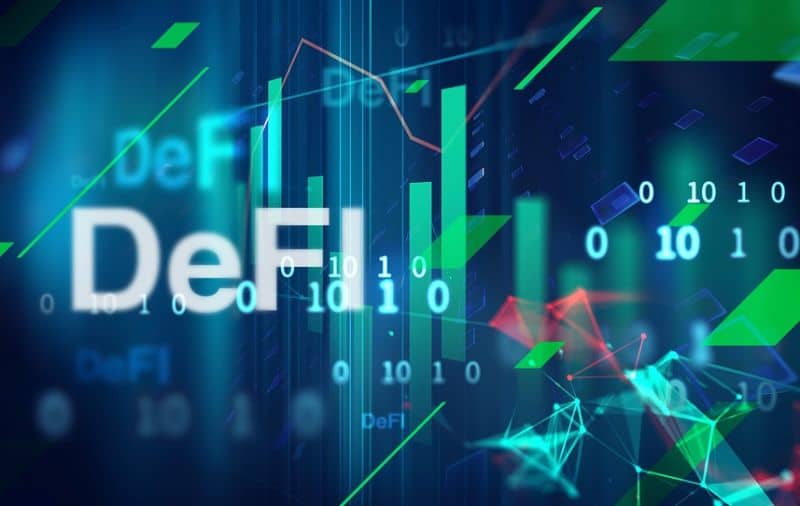
Like speed, finance suffers from the same problem. If 1 million people try to buy a product at the same time, but the server only can handle 100,000 users, then the Web2 solution is to throw money at it with bigger and bigger and bigger servers. But the problem is that this amount of server bandwidth isn’t needed all the time, just part of the time. So, building massive systems to handle spikes in usage is exceptionally inefficient, and unnecessarily expensive.
Also, because Web2 finance is also centralized, it results in latency, which means delays, so that transactions do not happen instantaneously. This means delays in transactions resulting in user abandonment or even in some cases lost transactions. Centralization is likewise bad for finance as it is for speed. But Web3 solves all these problems by allowing unlimited users, unlimited transactions, and maximum efficiency.
The result for end users is that instead of for example the old system we have now where if you want to wire $10 from India to the United States, it takes days and costs more than the $10 you want to send, in Web3 you can send even a dollar and it will be virtually free. Better yet, it will be instantaneous, happening about as quickly as it takes you to press the send button. Web3 will allow financial transactions that are fast, cheap, and can scale infinitely to support unlimited users and transactions.
But that’s not all. NFT, which means Non-Fungible Tokens, will allow payment for users and creators that was never before possible. Instead of where the only gift you get from hearts and likes is the feeling of goodwill, a quick endorphin hit, and social proof, now with Web3 you will be able to earn real money for every like, without that person having to literally open their bank account to send it. This allows mass monetization and cuts out all the middlemen. It’s a gamechanger, and will change the way we use the internet.
Web3 in a nutshell
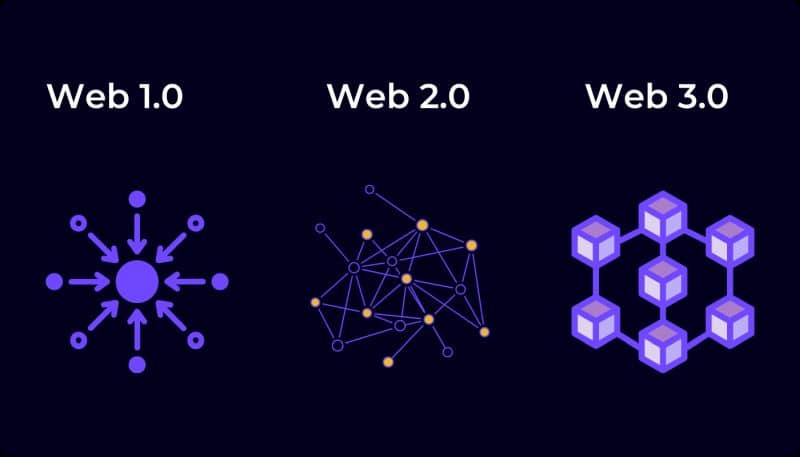
A simple way to put is is that Web1 is the read-only web, Web2 is the Read & write web, and Web3 is the read, write, & execute web. Web 1 was all about information sharing, whereas Web2 focused on interaction. Web3, however, is focused on total immersion.
Web1 was the passive web, Web2 was the social web, and Web3 is the semantic web, meaning an interpretive web that is intelligent and distributed. It’s about being more than just connected, it’s about being integrated. Everyone can be a participant, an author, a producer, a contributor, and a consumer.
The semantic web is also about making the content on the web machine-readable. Technologies like RDF (Resource Description Framework) and OWL (Web Ontology Language) help make this content accessible to computers. It’s the evolution in how content is distributed, created, interacted with, and consumed.
And while Web1 used basic HTML and servers, and Web2 used databases and dynamic content like PHP and JavaScript, Web3 uses the blockchain and cryptocurrency technologies, artificial intelligence and advanced software languages, and advanced material and computing technologies. It’s a transformation on every level, and will change the way everyone views, uses, and interacts with the internet, from elementary schoolers to corporate executives, from startups to multinational corporations.
Web3 is faster, smarter, more immersive, more dynamic, more trustworthy, safer, self-governing, distributed, decentralized, permissionless, stateful, native, verifiable, smoother, more integrated, and better in every way than Web2. It is the next evolution of computing technology, and it’s not going away.
So, the question is, are you ready for the new Web3 internet? If not, you better get on board, because the wave is coming, and you don’t want to be left behind.

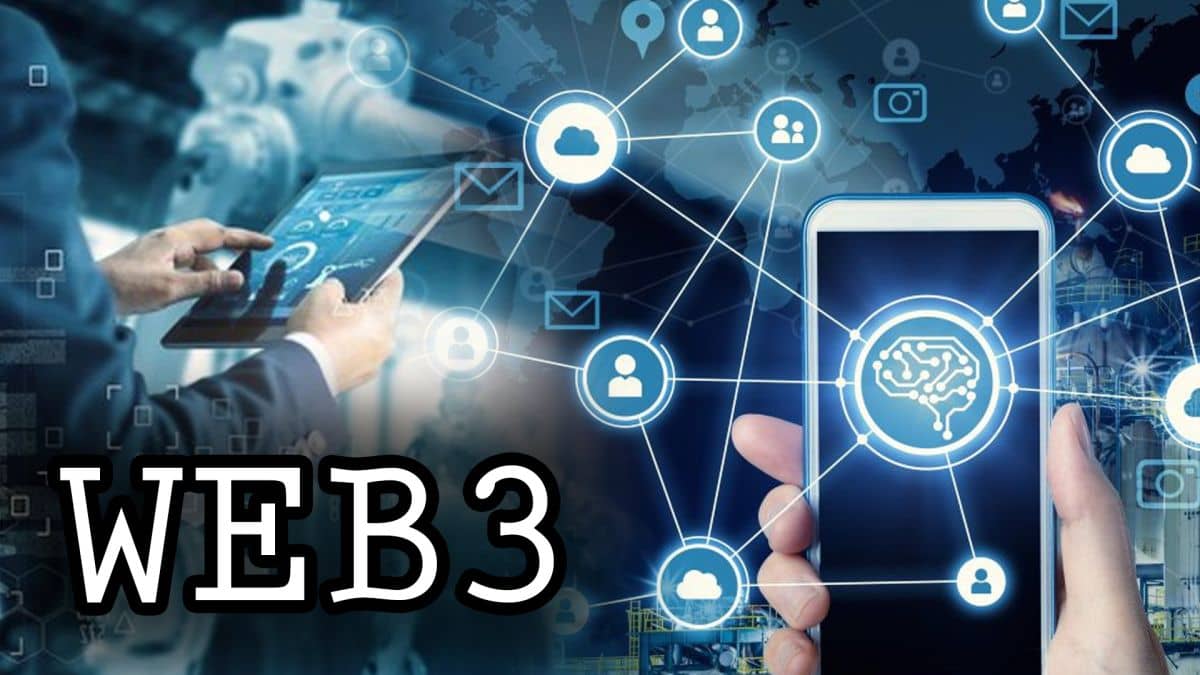



great sharing!
This is a very thorough article. I like how you describe the differences in the different webs in easy to understand terms